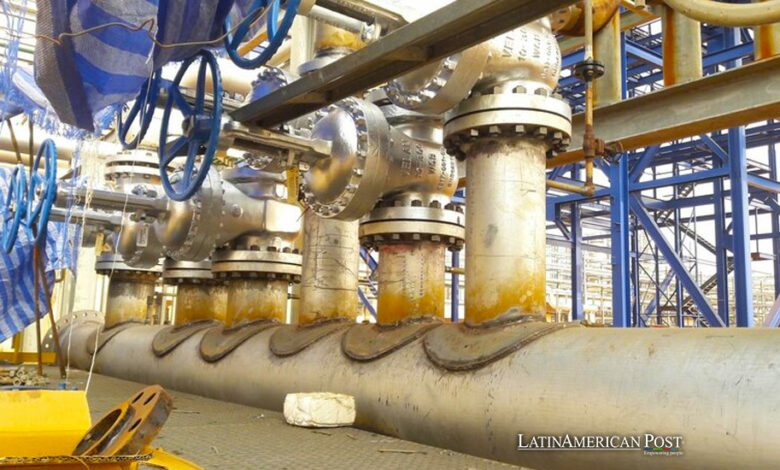Nicaragua-China Gas Storage Deal: A Strategic Shift in Latin America

Nicaragua’s National Assembly authorizes a $26.9 million loan from China for gas storage, marking a significant pivot in Central American energy infrastructure and reflecting China’s growing influence in Latin American geopolitics and development.
In a strategic move that underscores the shifting dynamics in Latin America, Nicaragua’s National Assembly has greenlit a substantial financial agreement with the People’s Republic of China. This $26.9 million loan, articulated in the Chinese yuan, is earmarked for a crucial infrastructure project: constructing three liquefied petroleum gas (LPG) storage spheres in Nicaragua. This decision, rapidly endorsed by the legislative body in Managua, signifies more than an infrastructural upgrade; it embodies the deepening ties between Nicaragua and China, reshaping the Central American nation’s energy landscape and signaling China’s expanding foothold in the region.
Facilitation of the Loan
The loan, facilitated urgently by President Daniel Ortega’s government, was expedited through the legislature, demonstrating the ruling party’s dominance and strategic priorities. This financial pact was forged between Nicaragua’s Ministry of Finance and Public Credit and China CAMC Engineering Co. Ltd, pinpointing a focused investment in enhancing Nicaragua’s energy autonomy and operational capacity.
Under this agreement, Nicaragua, through its national gas company Enigas, will design, construct, and operationalize three new LPG storage spheres. This development is an infrastructural enhancement and a strategic maneuver to ensure a more stable, high-quality LPG supply. The initiative aims to mitigate price volatility and extend coverage, reflecting the Nicaraguan government’s broader energy security and economic stability objectives.
Nicaragua lags behind its Central American neighbors in LPG storage capacity, a critical energy component. This project, as outlined by Sandinista legislator Wálmaro Gutiérrez, aims to bolster the nation’s storage capabilities significantly, transitioning from five to over eight million gallons of LPG capacity. This expansion is vital for Nicaragua, a country striving to fortify its energy reserves against fluctuating global oil prices and market uncertainties.
Focused Investment: Enhancing Energy Autonomy
This financial infusion from China to Nicaragua is part of a larger narrative of Chinese engagement in Latin America. Since December 2023, China has injected over $600 million into Nicaragua, showcasing an aggressive investment strategy aligning with its broader geopolitical and economic interests. This growing partnership was recently highlighted by the elevation of diplomatic relations between the two nations to a “strategic partnership,” a move celebrated by President Ortega as a monumental achievement.
The diplomatic evolution between China and Nicaragua has a storied history, dating back to their initial establishment of relations in 1985 during the first Sandinista government. The oscillation of Nicaragua’s foreign alignments, from its shift to Taiwan in 1990 under President Violeta Barrios de Chamorro to its return to Beijing’s embrace in 2021, mirrors the broader geopolitical realignments in Latin America. The region has become a battleground for diplomatic and economic influence, particularly between China and Taiwan, with countries like Nicaragua playing pivotal roles in this global chess game.
China’s growing economic presence in Latin America, exemplified by its dealings with Nicaragua, is part of a strategic pattern. The Asian giant is extending its influence through infrastructure loans and investments across the region, from the Northern Triangle countries to the Southern Cone. This strategy secures vital resources and market access for China and offers Latin American countries an alternative to traditional Western economic partnerships.
Microcosm of a Larger Trend: Belt and Road Initiative
The Nicaraguan gas storage project funded by China is a microcosm of this larger trend. It represents a significant step in China’s “Belt and Road” initiative, which seeks to expand its global influence through infrastructure and economic investments. For Nicaragua and similar nations in Latin America, these investments offer opportunities for development and growth but also raise questions about the long-term implications of deepening dependence on Chinese capital.
This deal between Nicaragua and China reflects a broader shift in Latin American international relations and development strategies. While it promises to enhance Nicaragua’s energy infrastructure and stability, it also underscores the need for a balanced approach to foreign investment and influence. As countries like Nicaragua navigate their development paths, the interplay of domestic priorities with international dynamics will continue to shape their trajectories in a rapidly evolving global landscape.
Also read: Nicaragua Expands Trade Horizons as It Officially Starts Free-Trade Agreement with China
The Nicaraguan-Chinese agreement on gas storage facilities is more than a financial transaction; it symbolizes shifting geopolitical allegiances and is a testament to China’s strategic ambitions in Latin America. As these developments unfold, they will undoubtedly influence the region’s economic and political landscape, challenging traditional paradigms and forging new alliances in the global quest for growth and stability.





